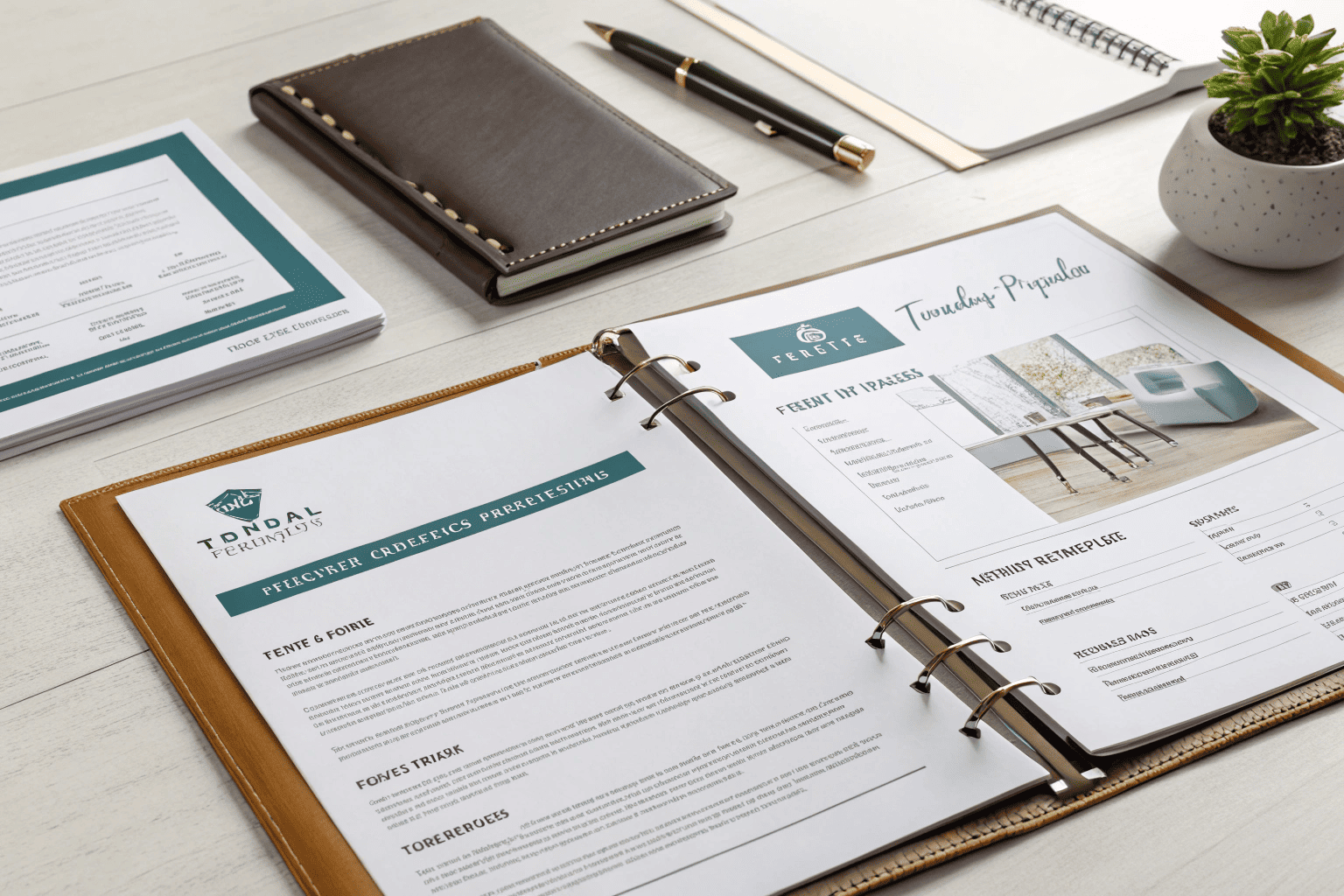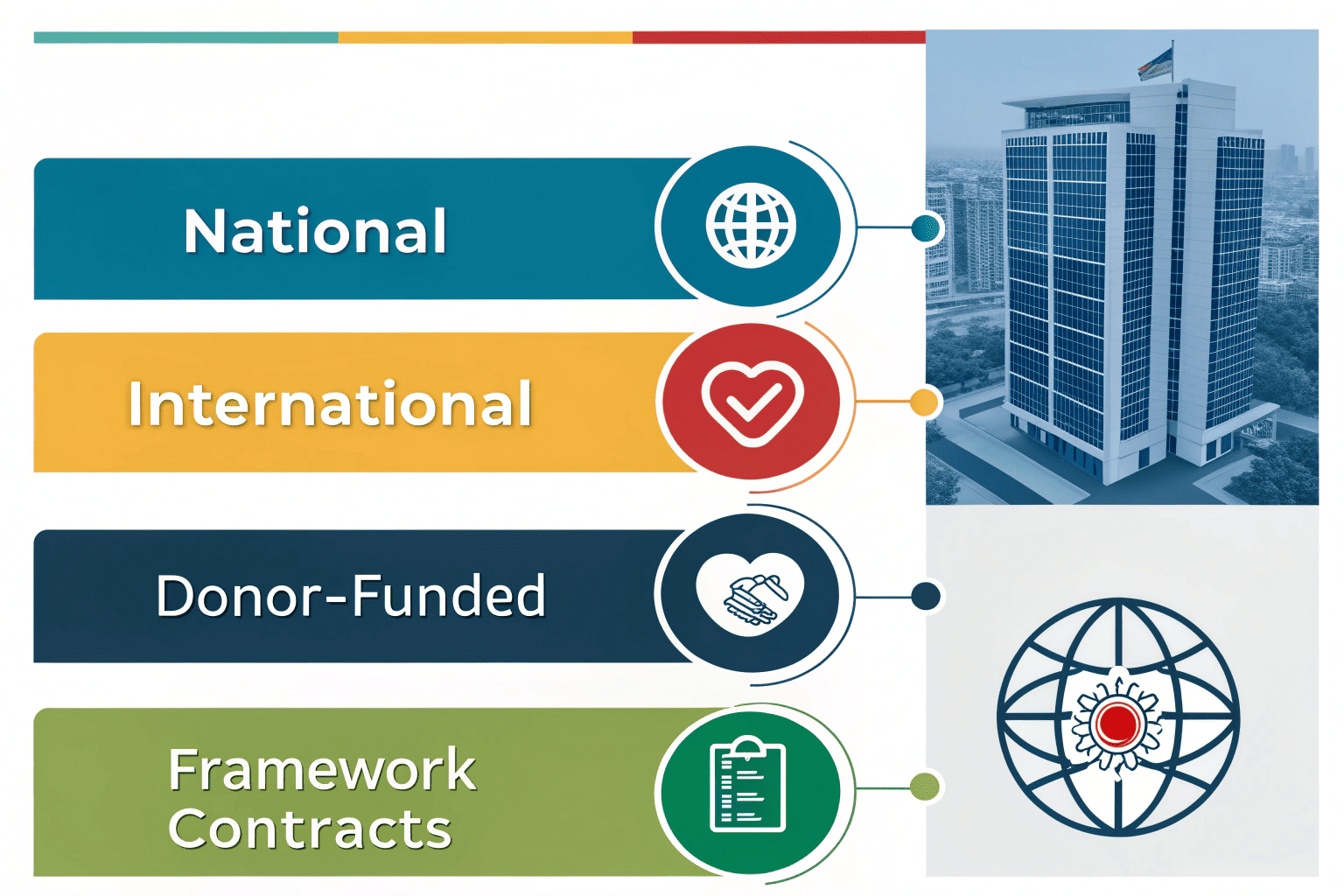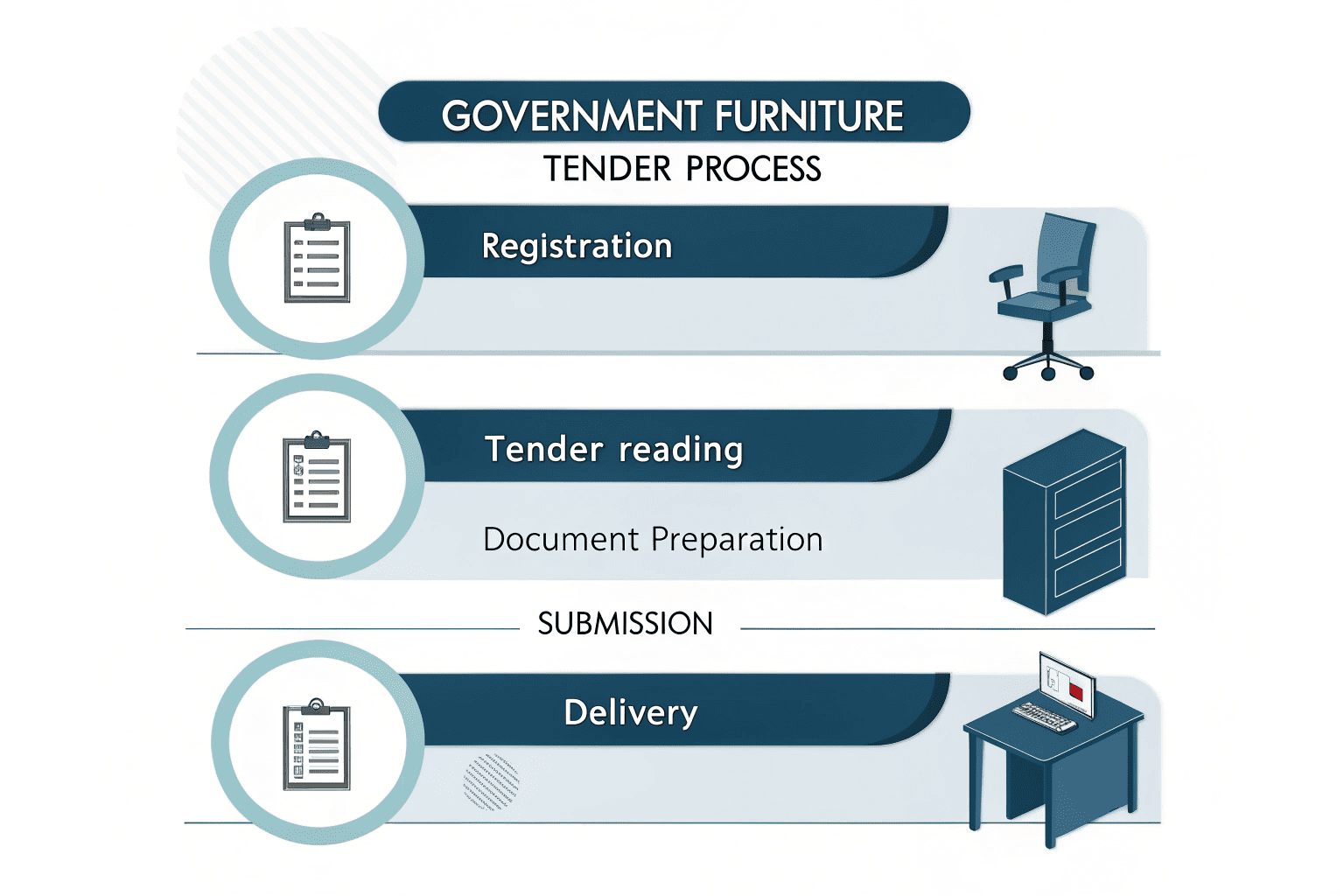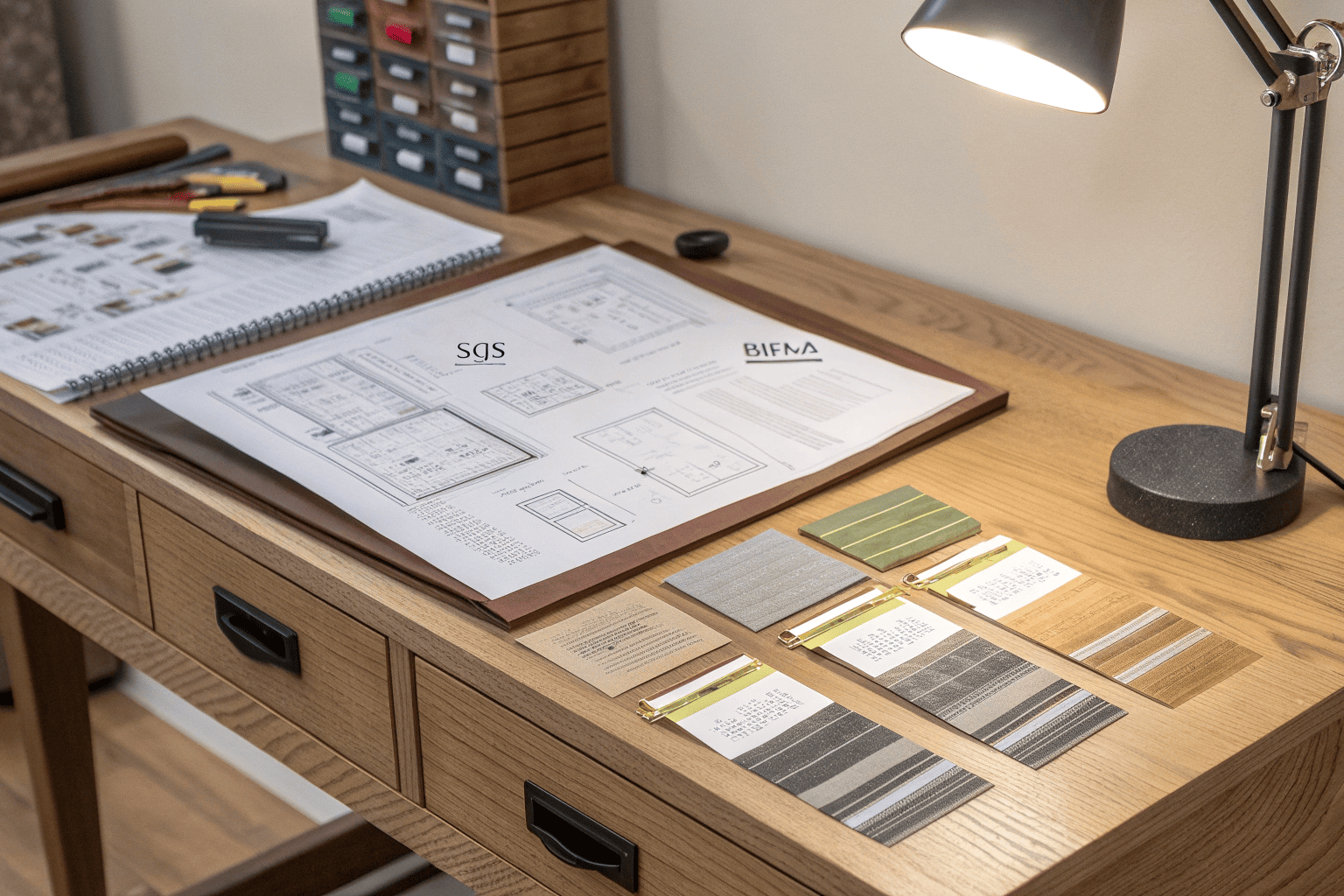Many furniture buyers want to supply to government tenders—but most fail because they’re not fully prepared. The process is strict, the paperwork is long, and the competition is serious.
To win a furniture tender, you must understand how the system works, what to prepare, and how to stand out in a compliant, professional way.
If you’re preparing for a government bid, this guide will give you all the basics. From tender types to proposal tips, from paperwork to supplier support, everything is here.
Understanding Government Tendering: What Furniture Buyers Need to Know?
Government tenders feel like a maze. It’s full of legal terms, formats, and rules that can confuse even experienced buyers.
Government tendering1 is a structured process where public institutions invite bids for goods like furniture, ensuring transparency, fairness, and quality standards.
What Is a Government Tender?
A government tender is an official invitation to supply goods or services under specified terms. It’s part of public procurement. Every country has its own tendering law, but most share three goals:
- Fair competition
- Best value for taxpayers
- Quality assurance and delivery
There are open tenders (anyone can bid), selective tenders (only pre-qualified vendors), and negotiated tenders (limited to certain suppliers). The government sets terms like deadlines, specs, and compliance checks.
Why It Matters for Furniture Buyers
If you’re supplying desks, chairs, recliners, or workstations, government tenders are a major opportunity. They cover schools, hospitals, courts, offices, even embassies.
But you must follow strict documentation and often compete on more than just price. Quality, delivery, compliance, and service history all play a role.
| Term | What It Means |
|---|---|
| RFQ | Request for Quotation – for small value items |
| RFP | Request for Proposal2 – for complex purchases |
| ITB | Invitation to Bid – often used for public works |
| BOQ | Bill of Quantities – itemized breakdown |
| Technical Specs3 | Detailed product features and standards required |
The 5 Key Steps to Prepare for Buying Furniture for Government Tenders
Many companies rush into tenders without knowing what’s needed. That leads to rejection or failure—even before evaluation begins.
To succeed in buying furniture for government tenders, buyers must follow five steps: register, study the documents, prepare product files, confirm logistics, and finalize pricing.
Step-by-Step Breakdown
Step 1: Registration
Most governments require vendors to register through a central platform. This may involve:
- Company license and tax ID
- Financial statements
- Prior contract history
- Legal representative documents
Step 2: Read the Tender Carefully
Don’t skim. Read every section. You need to know:
- Quantity breakdown
- Technical requirements
- Delivery location and schedule
- Evaluation method
- Submission format (physical, online, or both)
Step 3: Product Dossier Preparation
This includes:
- Product specs
- Dimension drawings
- Certifications (BIFMA, EN1335, SGS, etc.)
- Test reports
- Materials and color options
Check if fire-retardant or eco-materials are required.
Step 4: Logistics Plan
Government clients care about:
- How you pack (carton specs)
- How you deliver (by container, truck, etc.)
- How you ensure on-time arrival
- How you handle damage or replacements
Step 5: Pricing Proposal4
This must follow the template. Include:
- Unit price (FOB/CIF/DDP)
- Breakdown by item
- Total sum
- Currency and Incoterms
What Types of Tenders Apply to Furniture Projects?
Not all government tenders are open to all companies. Some are small-scale. Others are regional. Some involve international competition.
Furniture tenders can be national, regional, or donor-funded—each with different rules, contract terms, and compliance levels.
| Tender Type | Description | Example |
|---|---|---|
| National Tender | Open to local companies | School desk bid in Malaysia |
| International Tender | Open to overseas suppliers | UN-funded hospital furniture |
| Donor-Funded Projects | Rules by donor (World Bank, UNDP) | African school furnishing by USAID |
| Turnkey Projects | Includes supply + install | Full office setup for ministry |
| Framework Contracts | Annual supply agreements | Government office chairs contract |
How to Structure a Winning Tender Proposal (for Furniture Bidders)?
Many bidders lose not because their product is bad—but because their proposal is unclear, unprofessional, or misses details.
A winning proposal for buying furniture for government tenders is clear, compliant, and tailored to the buyer’s evaluation criteria.
| Section | Purpose |
|---|---|
| Cover Letter | Show professionalism and express interest |
| Company Profile | Past projects, capabilities, structure |
| Product Specs | Full descriptions with proof and drawings |
| Compliance Table | Show how you meet every listed standard |
| Pricing Table | Transparent and aligned to BOQ |
| Delivery Schedule | Clear timeline, aligned with tender terms |
| Warranty & After-Sales | Coverage, parts, support system |
| Legal Docs | Certificates, licenses, past contracts |
Common Tendering Methods in Government Furniture Procurement
Most government tenders use open, selective, or negotiated methods—with e-procurement now becoming standard.
| Method | Description | Pros | Cons |
|---|---|---|---|
| Open Tender | Publicly advertised, anyone can bid | Transparent, fair | High competition |
| Selective Tender | Invite only, pre-qualified vendors | Better odds, higher quality | Harder to access |
| Negotiated Tender | Direct negotiation with 1–3 suppliers | Faster process | Less transparency |
Manufacturer’s Note: How We Support Dealers and Bidders in Government Projects
Over the past decade, we’ve helped partners win furniture bids across Southeast Asia, South America, and the Middle East—especially in public schools, hospitals, and local government office buildings.
Winning the bid is just the beginning. Delivering on time, meeting inspection standards, and offering reliable after-sales support is what builds long-term credibility.
At our factory, we provide:
- Bid-Ready Specs: Full tech sheets, 3D drawings, BIFMA/EN/SGS certifications, and test reports
- Custom BOM + Pricing Sheets: Cost breakdowns, carton sizes, HS codes, FOB/CIF formats
- On-Time Fulfillment: Strict production planning
- Compliance Support: Fire-retardant, low-VOC, REACH/CA117/BS5852 readiness
🧭 Also read: How to Choose the Right Office Chair Supplier in China
Final Checklist for Buying Furniture for Government Tenders
The last-minute rush is the top reason tenders fail. Many companies skip checks, upload the wrong files, or forget signatures.
Before submitting, double-check every document, confirm pricing format, and prepare backup files in case of upload issues.
| Task | Status |
|---|---|
| Registration confirmed on tender portal | ✅ |
| All PDFs signed, stamped, and scanned clearly | ✅ |
| Product drawings match tender specs | ✅ |
| Pricing table follows official template | ✅ |
| Backup USB or online link prepared | ✅ |
| Factory delivery promise confirmed | ✅ |
Conclusion
Government tenders can open big doors—but only if you’re ready. The best bids don’t just meet requirements—they show the buyer you’ve done this before, and you’re ready to deliver.
From understanding tender types to preparing files, from writing proposals to avoiding mistakes, you now have the framework to compete seriously.
📘 For more insights, visit the OECD Public Procurement Guide
-
Understanding government tendering is crucial for navigating the procurement process effectively. ↩
-
Explore RFPs to understand how to approach complex purchases in government tenders. ↩
-
Understanding technical specs is vital for meeting the required standards in your bids. ↩
-
A well-structured pricing proposal can significantly enhance your chances of winning a tender. ↩







